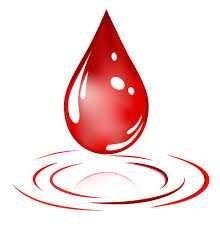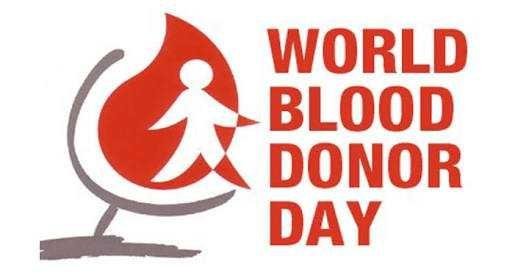The essence of blood donation


It is a primordial fact that the blood is one of the most important parts of the human system. Blood is the ‘water’ of our body’s rivers and human beings cannot live without the blood. Without blood, we cannot keep warm or cool off. We cannot fight infections because the circulating blood is what keeps our immune system healthy and our heart pumping. Blood literally gives life!
In modern medical practice, blood transfusions are used for various medical conditions to replace lost components of the blood. According to the United States National Library of Medicine, Blood transfusion is generally the process of receiving blood products into one’s circulation intravenously. Early transfusions used whole blood, but modern medical practice commonly uses only components of the blood, such as red blood cells, white blood cells, plasma, clotting factors, and platelets.
Transfusion of blood and blood products helps save millions of lives every year. It can help patients suffering from life-threatening conditions live longer and with higher quality of life, and supports complex medical and surgical procedures. It also has an essential, life-saving role in maternal and prenatal care. Access to safe and sufficient blood and blood products can help reduce rates of death and disability due to severe bleeding during delivery and after childbirth. Ironically, in many countries, there is no adequate supply of safe blood. Blood transfusion services face the challenge of making sufficient blood available, while also ensuring its quality and safety. While blood transfusion saves lives and improves health, millions of patients needing transfusion do not have timely access to it due to lack of reliable testing systems, accurate data on the screening of donated blood, staff shortage, and lack of basic laboratory services.
The most common source of blood is from voluntary donors from the general public. Many countries have blood bank at which any healthy person can donate blood. The World Health Organization and the International Federation of Red Cross and Red Crescent Societies developed a global framework for action to achieve 100% voluntary blood donation around the world. The vision embodied in this framework is the achievement of 100% voluntary non-remunerated blood donation in every country of the world. It is based on the recognition that voluntary non-remunerated blood donors are the foundation of a safe, sustainable blood supply. Without a system based on voluntary unpaid blood donation, particularly regular voluntary donation, no country can provide sufficient blood for all patients who require transfusion. . It is designed to provide guidance and support to countries seeking to establish effective voluntary blood donor programmes, phase out family/replacement blood donation and eliminate paid donation.
It on this basis that the World Health Organisation (WHO) has also instituted the 14th of June, every year as World Blood Donor Day. The event is to create awareness on the need for safe blood and blood products and to appreciate voluntary, unpaid blood donors for their life-saving gifts of blood. The theme for this year celebration is “Safe blood for saving mothers” and the goal of the campaign is to increase awareness about why timely access to safe blood and blood products is essential for all countries as part of a comprehensive approach to prevent maternal deaths. Every day, about 800 women die from pregnancy or childbirth-related complications. Almost all of these deaths occur in developing countries. More than half of them occur in sub-Saharan Africa and almost one third in South Asia. The risk of maternal mortality is highest for adolescent girls under 15 years of age.
PM NEWS Nigeria
Understanding The Essence Of Blood Donation
4 years ago
By Sola Ogunmosunle
It is a primordial fact that the blood is one of the most important parts of the human system. Blood is the ‘water’ of our body’s rivers and human beings cannot live without the blood. Without blood, we cannot keep warm or cool off. We cannot fight infections because the circulating blood is what keeps our immune system healthy and our heart pumping. Blood literally gives life!
In modern medical practice, blood transfusions are used for various medical conditions to replace lost components of the blood. According to the United States National Library of Medicine, Blood transfusion is generally the process of receiving blood products into one’s circulation intravenously. Early transfusions used whole blood, but modern medical practice commonly uses only components of the blood, such as red blood cells, white blood cells, plasma, clotting factors, and platelets.
Transfusion of blood and blood products helps save millions of lives every year. It can help patients suffering from life-threatening conditions live longer and with higher quality of life, and supports complex medical and surgical procedures. It also has an essential, life-saving role in maternal and prenatal care. Access to safe and sufficient blood and blood products can help reduce rates of death and disability due to severe bleeding during delivery and after childbirth. Ironically, in many countries, there is no adequate supply of safe blood. Blood transfusion services face the challenge of making sufficient blood available, while also ensuring its quality and safety. While blood transfusion saves lives and improves health, millions of patients needing transfusion do not have timely access to it due to lack of reliable testing systems, accurate data on the screening of donated blood, staff shortage, and lack of basic laboratory services.
The most common source of blood is from voluntary donors from the general public. Many countries have blood bank at which any healthy person can donate blood. The World Health Organization and the International Federation of Red Cross and Red Crescent Societies developed a global framework for action to achieve 100% voluntary blood donation around the world. The vision embodied in this framework is the achievement of 100% voluntary non-remunerated blood donation in every country of the world. It is based on the recognition that voluntary non-remunerated blood donors are the foundation of a safe, sustainable blood supply. Without a system based on voluntary unpaid blood donation, particularly regular voluntary donation, no country can provide sufficient blood for all patients who require transfusion. . It is designed to provide guidance and support to countries seeking to establish effective voluntary blood donor programmes, phase out family/replacement blood donation and eliminate paid donation.
It on this basis that the World Health Organisation (WHO) has also instituted the 14th of June, every year as World Blood Donor Day. The event is to create awareness on the need for safe blood and blood products and to appreciate voluntary, unpaid blood donors for their life-saving gifts of blood. The theme for this year celebration is “Safe blood for saving mothers” and the goal of the campaign is to increase awareness about why timely access to safe blood and blood products is essential for all countries as part of a comprehensive approach to prevent maternal deaths. Every day, about 800 women die from pregnancy or childbirth-related complications. Almost all of these deaths occur in developing countries. More than half of them occur in sub-Saharan Africa and almost one third in South Asia. The risk of maternal mortality is highest for adolescent girls under 15 years of age.
In the 2010 WHO report, Nigeria recorded 50,000 maternal deaths a year, thus placing it as having the second highest rate after India. And with every maternal death, there are more child deaths. The mortality ratio for children under -five years in Nigeria is 230 per one thousand births, 16 children less than five years die every 10 minutes. New born deaths account for more than a quarter of these deaths especially within the first week of life due to pregnancy and delivery related complications. Severe bleeding during delivery and after childbirth is a major cause of mortality, morbidity and long-term disability. However, access to safe and sufficient blood and blood products and the rational and safe use of blood transfusion still remain a major challenge around the country.
The availability of low-risk blood donors in Nigeria and many developing countries is a serious challenge and of public health concern. While the need for blood is universal, there is a major imbalance between developing and developed countries in the level of usage and access to safe blood. The practice of voluntary blood donation (VBD) is high in developed countries than developing countries. The World Health Organization (WHO) estimated that donation by 1% of a country population is the minimum blood required to meet a nation’s most basic needs for blood. However, less than 1% of the populations in many countries of the world most especially developing countries donate blood. In many countries less than25% of their blood supplies were from voluntary unpaid blood donor which is adjudged the safest blood source.
Nigeria, as a member of The World Health Organization has made little progress with voluntary donor enrollment. Only about 5% of donor bloods used in Nigeria come from voluntary donors; family replacements and paid donors are still the major sources of donor blood procurement. The blood banking system in Nigeria is still poorly developed as a number of centers depend on paid donors whose hematological and infectious status may not determined often times prior to blood donations. One of the major impediments to achieving adequate supply of safe blood in Nigeria is the lack of awareness among the citizenry on the health benefits of regular donation of blood. There is this misconception that that donating blood can endanger one’s life. Most people are not properly informed about the process of blood donation, and assumed that the process could be harmful. People are being asked to look for donors when members of their families and friends are in dire need of blood.
Ensuring safe and adequate blood supply for the health system will, therefore, require reorientation or a drastic change of attitude of Nigerians to voluntary blood donation. The authorities must step up public enlightenment campaigns to sensitise the populace on the benefits of voluntary blood donation. They need to understand that they are doing this to save lives without harming themselves. Ministries of health, particularly in states with high rates of maternal mortality must also take concrete steps towards ensuring that health facilities in their states improve access to safe blood and blood products from volunteer donors for women giving birth.
It is imperative that our national policy on blood transfusion services be refocused. Hospital Transfusion Committees and System should be established in each hospital across all states for reporting adverse transfusion reactions and to implement the national policy and guidelines and to monitor the safe and rational use of blood and blood products at the local level. It is only this way that we can truly ‘give life to those give life’.